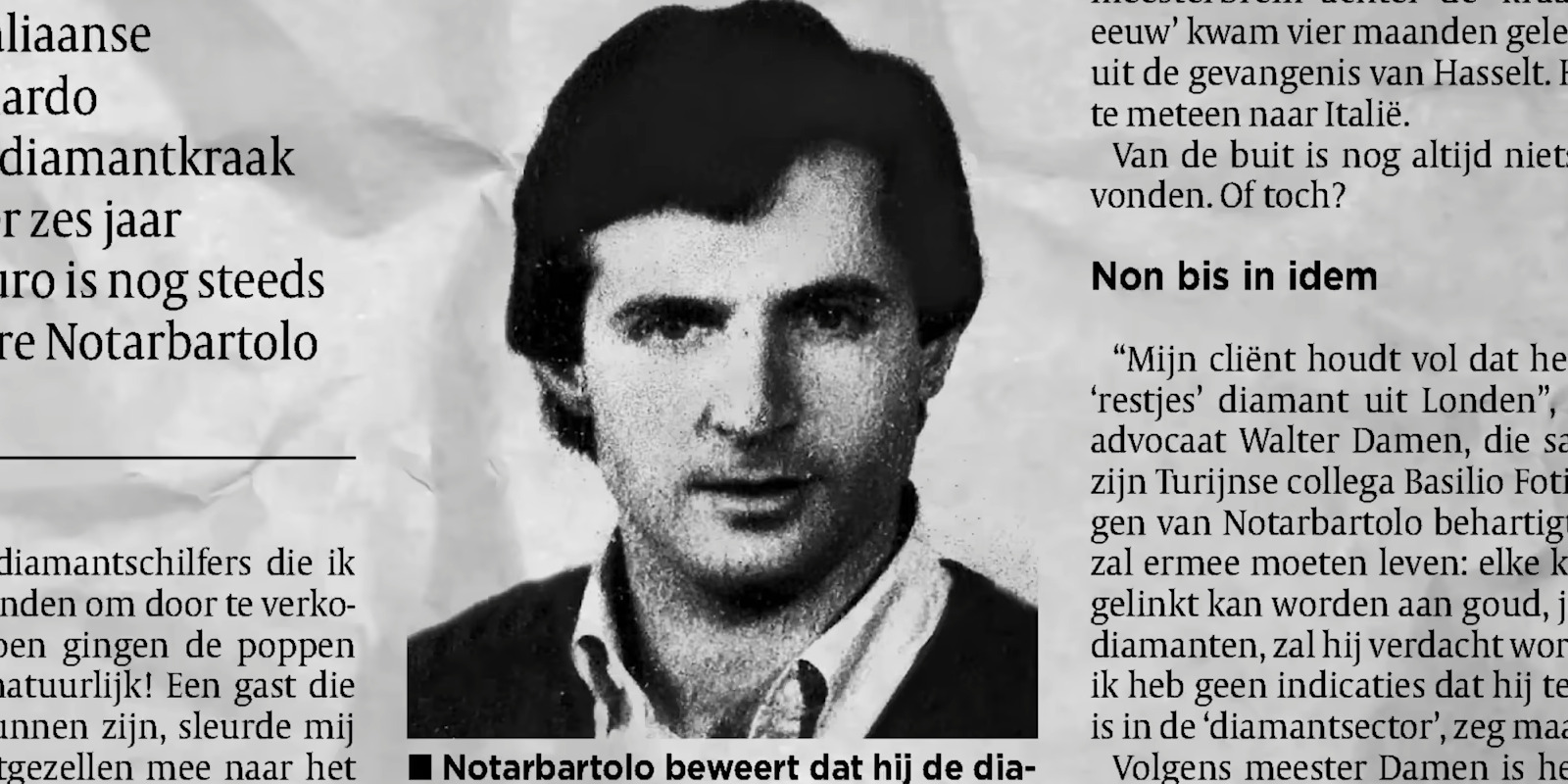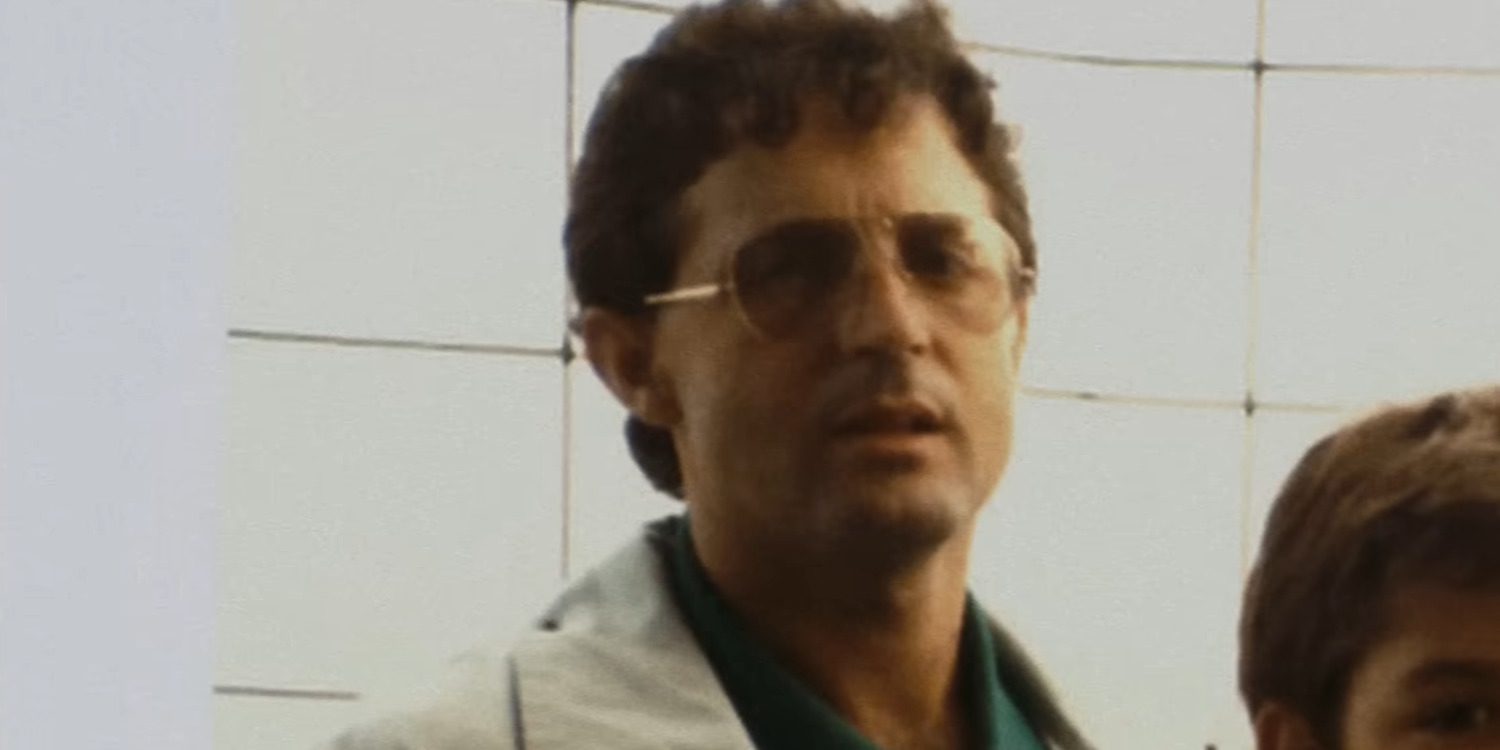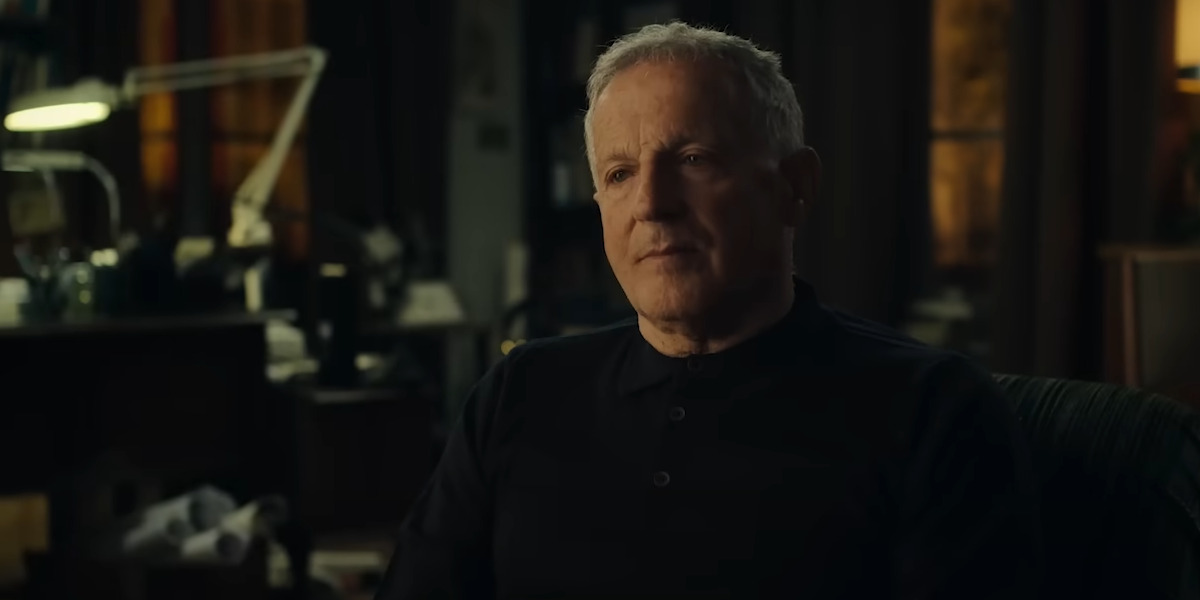In 2003, the Diamond District in Antwerp, Belgium, oversaw one of the biggest diamond heists in history. The estimated loot totaled up to 100 million dollars and more. The authorities, the city’s Diamond Squad, the only specialized police of its kind, soon apprehended the mastermind responsible for the theft: Leonardo Notarbartolo, an infamous thief from Italy. Evidence—circumstantial, DNA, and more—all implicated him in the crime and ultimately led to his conviction alongside three of his other accomplices. Nonetheless, to this day, even though Notarbartolo has conceded his participation in the heist, he maintains that he was never the mastermind. In the Netflix documentary ‘Stolen: Heist of the Century,’ he claims that someone by the alias of Alessandro is the real architect behind the famed crime.
Leonardo Notarbartolo and the Mastermind
On the morning of February 16, 2003, news broke out about the multi-million dollar robbery at the Antwerp Diamond Center. Detectives Agim De Bruycker and Patrick Peys of the Diamond Squad helmed the ensuing federal investigation. In the early days, a crucial piece of evidence came forward after August Van Camp, a shopkeeper from Belgium’s Floordambos Woods area, found a large pile of trash on his property. The peculiar thing about this garbage remained the mix of half-eaten sandwiches and international currencies it housed. Consequently, torn-up paperwork from this pile of hastily discarded evidence revealed a connection between the crime and Leonardo Notarbartolo. Soon enough, the detectives on the case uncovered more and more links that made the Turin, Belgium, resident their prime suspect.

Within a week of the robbery, the alleged mastermind returned to Antwerp, to the Diamond Center, where he was ultimately arrested. Nonetheless, even after conviction and a 10-year prison sentence, Notarbartolo maintains a different version of the truth. He didn’t shy away from the reality of his criminal past. Yet, he adamantly protested the mastermind label in the Antwerp Diamond Heist. Instead, he claimed that his involvement in the crime as a participant stemmed from another contact. His early statements pitch a Jewish diamond dealer as this contact. Later, he went to label the apparent dealer as Alessandro. Notarbartolo claimed that Alessandro had reached out to him at a cafe and offered to pay him 100,000 euros if he had photographed the building and its daunting security systems. In order to do this, he would be equipped with a pen that hid a digital camera within.
Notarbartolo’s claims went on to become even more outlandish. Notarbartolo once attested that in the aftermath of the robbery, he and the other robbers discovered that many of the leather satchels stolen from the vault were entirely empty. As a result, instead of the original estimated 100 million dollars, they only ever saw 20 million. This, paired with the allegations about the involvement of a diamond dealer as the ringleader of the crime, paints a clear picture. His allegations argue that if the dealer was in cahoots with vault-owners, they could’ve emptied their vaults to a certain degree and claimed a higher loss after the robbery. Thus, Notarbartolo’s account effectively paints him and his co-conspirators out to be pawns in an overarching game of insurance fraud with Alessandro as the clear mastermind behind it.
Evidence Suggests Alessandro Was Not Real
By pitching an elusive figure, Alessandro, as the mastermind behind the Diamond Heist, Leonardo Notarbartolo stands to gain a number of advantages. Overall, four people were arrested in connection with the robbery at the Antwerp Diamond Center. While the other convicts only received prison sentences of five years, Notarbartolo’s punishment doubled that number due to his position as the leader. Furthermore, it also brought a significant spotlight on him, which hasn’t always been necessarily flattering. Therefore, it goes to prove that the title of the mastermind garners a negative association. For the same reason, he could’ve created the story about Alessandro for the same purpose. Looking at the evidence collected by the authorities certainly creates this impression.

Over the course of the investigation, detectives Agim De Bruycker, Patrick Peys, and the other cops assembled sizeable evidence that proved Notarbartolo’s undeniable close participation in the heist. It was discovered that the assumed mastermind had been renting out an office at the Diamond District and even had a locker in the underground vault. Where a majority of other safes were broken into on the night of February 15, his was left untouched in the midst of the chaos. Furthermore, security footage and witness accounts established that Notarbartolo used his frequent presence at the Antwerp Diamond Center to study the building and its heavily guarded nature in order to prepare for the heist.
Furthermore, the garbage on Van Camp’s property, clear leftovers belonging to the robbers, had a sandwich, which presented a DNA match for Notarbartolo. Consequently, the evidence dug up in the investigation helmed by Agim De Bruycker and Patrick Peys lends no real credibility to the existence of another party called Alessandro. Over the course of the investigation, the authorities identified multiple of Notarbartolo’s accomplices. CCTV footage of local grocery stores, geolocation tracking on SIM cards, and other avenues identified almost every person believed to be involved in the heist. Nonetheless, over the course of the investigation, no mention of Alessandro ever came up.
Leonardo Had Several Motives Behind Creating Alessandro
Leonardo Notarbartolo’s allegations about an apparent mastermind, Alessandro, certainly add a layer of intrigue to the entire story. Still, the evidence remains stacked against his claims. For one, this version of the events finds Notarbartolo firmly out of the building where the robbery took place as a getaway driver, waiting by the side of the road. Yet, this doesn’t add up with other aspects of his confession/testimonials. The vaults in the Antwerp Diamond Center were hidden behind ten layers of security, which included magnetic alarms, heat and thermal detectors, and hundreds of safes with millions of possible combinations. If the convict was indeed just the designated getaway driver, then there’s no real reason for him to be knowledgeable about each step of the heist.

Even if Notarbartolo’s claim about thirty practice runs is to be believed, he wouldn’t have such intimate knowledge of the robbery’s intricacies unless he was physically present in the building. Furthermore, the fact remains that out of everyone, he was the only one who had any direct links to the site. He’s the one who set up fake companies to build a rapport with the vault and ran recon missions to get a lay of the heisting land. Additionally, his past also points toward the backstory of someone gearing up for a big bang in his criminal career. The Italian man’s history with the wrong side of the law started as early as 6 years old, when he committed his first act of thievery. The inciting incident of theft, involving a milk run and a sleeping milkman, paved the way for numerous other crimes in his youth.
As a result, by the time Notarbartolo was living in Turin as an adult, he had connections to a group of thieves, each specializing in different sectors. Later, multiple individuals from this group, known as the School of Turin, were identified as his co-conspirators in the Diamond heist. In fact, one of them, Pietro Tavano, was a longtime friend of Notarbartolo. Thus, his ability to bring in and vouch for a flighty, paranoid man suggests he had significant control over the operation. Additionally, there’s a chance that Alessandro’s potential fabrication was a result of the suspicions raised regarding Notarbartolo’s mafia connections. Authorities have long asserted his connection to the Sicilian mob.
In fact, Notarbartolo’s cousin, Benedetto Capizzi, once claimed to be in the running for the new leader of the Sicilian Mafia, before his arrest. Naturally, this gives way to some speculation about the latter’s possible involvement in the crime. Thus, if the convicted mastermind was eager to keep the limelight away from the same, a story about Alessandro or a Jewish diamond dealer seems opportune. Still, much like the claims about an alternative mastermind, any connection to the Sicilian Mafia also remains entirely speculative. In the end, the facts of the case remain as such: Notarbartolo set up shop at the Antwerp Diamond Center two years before he and his accomplices orchestrated a heist in the same building. His familiarity with the location undeniably became instrumental in the success of the robbery, making him a crucial player in the game.
Ultimately, the detectives on the case and the courts came to the conclusion that the position Notarbartolo occupied was undoubtedly that of a mastermind. “Spy pens? Replica vaults? That isn’t the story of a crime, it’s more like the script of a movie,” De Bruycker asserted on the matter. “There was no super criminal lurking in the background. It was just him (Leonardo Notarbartolo).” At the end of the day, the existence of an elusive bigger villain like Alessandro would have been immensely beneficial for Notarbartolo. With it, he can wash his hands of the majority of the blame, paint himself as a victim of sorts, and dodge questions about the diamonds’ whereabouts that remain unknown to this day.
Read More: Antwerp Diamond Heist: Where Are the Robbers Now?


You must be logged in to post a comment.